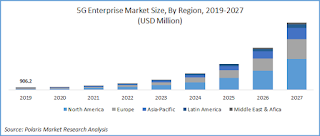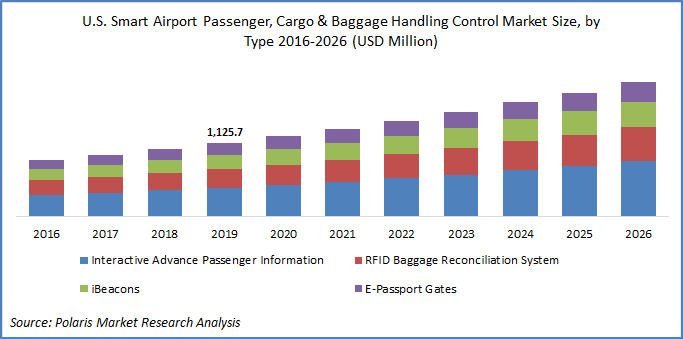New York City, 5 Nov 2020: The global 5G Smartphone Market size is expected to grow at a CAGR of 122.7% from 2020 to 2027 according to a new study by Polaris Market Research. The demand for 5G smartphones in 2019 was 12.42 million units, however the market saw a precipitous decline in the average selling price during Q1 of 2020 due to the COVID-19 pandemic as one of the major reasons and the price fall continued during Q2-2020. Another major reason of the decline was the low-priced Chinese 5G devices. However, the overall market is expected to bounce back during Q3 and Q4 of 2020 and is estimated to accelerate and grow during the forecast period. This also affected the average selling price of the 5G devices.
5G Smartphone are devices that support the fifth generation of mobile networking. 5G technology is being increasingly commercialized in different parts of the globe, with China leading the race. Theoretically, 5G is said to be 100 times faster than its predecessor, with estimated speeds up to 10 Gbps. Smartphones require 5G compatible sensors and receivers to support the additional speeds.
 |
| request for sample pages |
The increasing demand for high speed internet for both small and large sized businesses and individuals for buffer-free streaming and the prominence of over the top (OTT) services such as Netflix, Amazon Prime, Hulu, Disney+, etc. are the prominent factors responsible for this prolific growth.
On-demand content is being increasingly preferred by the younger generation, and the advent of 5G Smartphone will provide them with a tool for viewing high quality content on the go. High speed internet is required for providing a hassle-free streaming experience. Furthermore, with the growth of both residential and industrial IoT, smartphones will play the role of a personalized authentication device for enhanced security purposes.
Collaboration between the smartphone manufacturers, chipset providers and telecommunication providers will help in the acceleration of commercial 5G services. Furthermore, government bodies around the globe are mulling over regulations pertaining to the user of 5G spectrum to speed up the adoption of 5G.
In China, for instance, the government has drastically reduced licensing costs to speed up the rolling out of 5G services. The U.S. Federal Communications Commission (FCC), on the other hand, has amended the rules that govern equipment modification. New hardware can be installed on the existing poles to bring down the capital costs and speedup the deployment of 5G. Since 5G will be build mainly on the existing 4G infrastructure, the stakeholders will need to provide fool-proof strategies to ensure that the networks are capable of handling the additional data speed and connected devices.
Apple Inc., Ericsson, China Mobile, Huawei Technologies Co. Ltd., Motorola, Inc., Lenovo Group Limited, BBK Electronics Corporation, Nokia, LG Electronics Inc., TCL Communication Limited, Xiaomi Corporation, Samsung Electronics Co., Ltd and Vivo Mobile Communication Co., Ltd. some of the key players operating in the market.
The 5G smartphone manufacturers are focusing on indirect sales channels to increase their unit sales. Xiomi, for instance, is bringing down its operational expenses by partnering with platforms such as Walmart and Amazon for 5G smartphone sales. Also, prominent players such as Samsung and BBK electronics are aggressively pursuing the mid-range smartphone segment to target the middle and upper echelons of the society.Furthermore, the number of multi-SIM smartphone models are expected to increase in the coming years, as the manufacturers are promoting dual-network capability in smartphones. Samsung, for instance, supports dual-SIM technology in A51 5G smartphone, which was launched in April, 2020. These allow the consumers to use a local and a roaming SIM in the same device during international travel.
Read More : https://www.polarismarketresearch.com/industry-analysis/5g-smartphone-market





